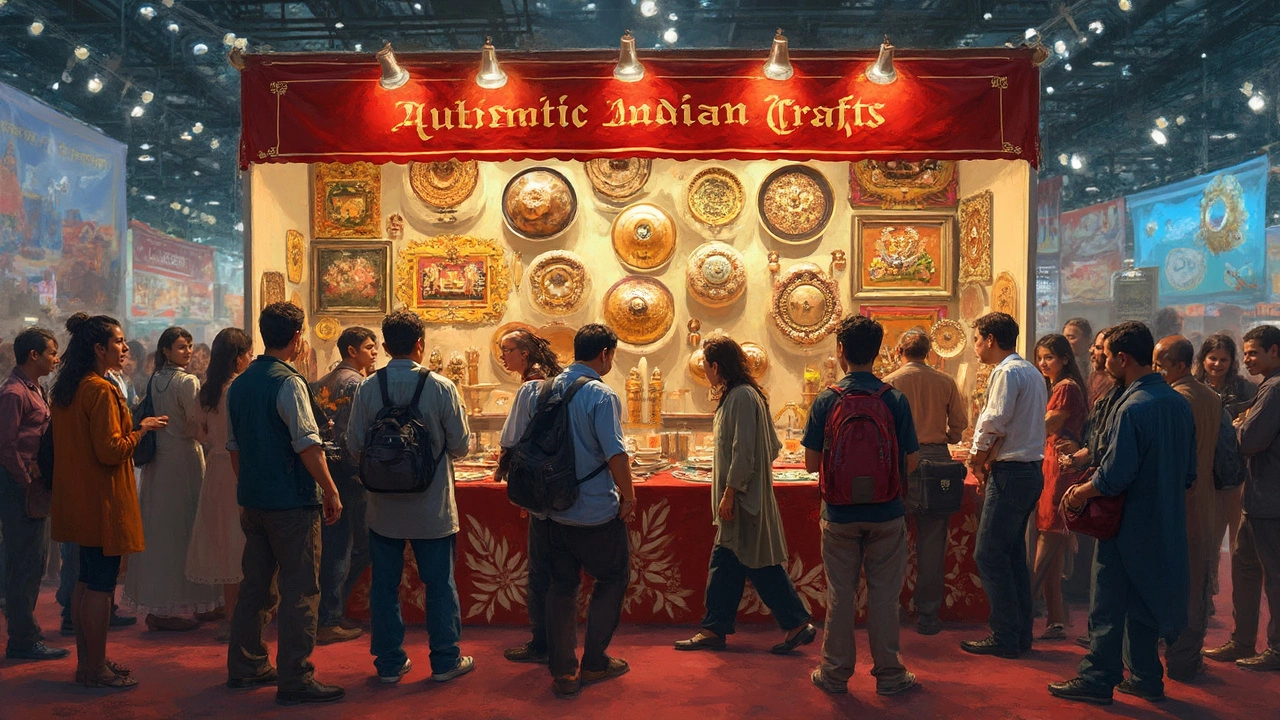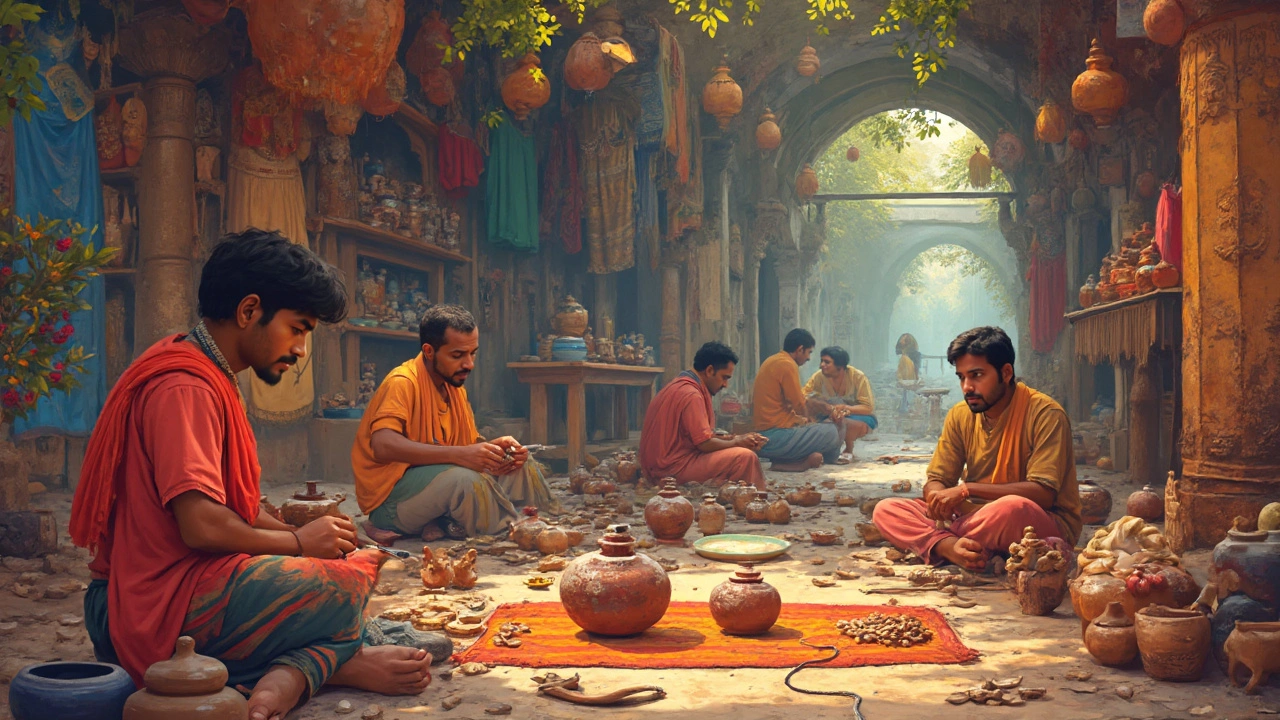Alright, so you've got this idea to sell Indian handicrafts in the USA. Sounds exciting, right? The first thing you need to know is that there's definitely a demand for these culturally rich products across the Atlantic. But how do you tap into that market successfully?
To start with, let's talk about understanding your customer. The USA is a diverse place with a mix of tastes and preferences. Some folks might be drawn to the intricate designs of Madhubani paintings, while others may love the texture of handwoven Indian fabrics. Knowing what clicks with different segments is crucial.
Next up is figuring out the best way to reach these customers. Online platforms like Etsy, Amazon Handmade, and even your website can be game-changers. These days, everyone and their grandma are shopping online! Plus, with the right keywords and a bit of digital marketing, you can make sure potential buyers can find your products easily.
And don't forget about the good old-fashioned way to sell—establishing connections. Attending trade shows and craft fairs not only gets you direct sales, but you'll also meet potential partners and learn more about the market trends. It's all about building those relationships!
Finally, let's talk about something you can't compromise on: quality and authenticity. People in the US eat up stories behind the art. They appreciate knowing the hands that crafted the piece and the tradition it carries. So, ensure every product tells a story and delivers on craftsmanship.
- Understanding the Market
- Choosing the Right Platforms
- Building Relationships
- Ensuring Quality and Authenticity
Understanding the Market
Diving into the US market is like stepping into a world full of opportunities for Indian handicrafts. It's just a matter of knowing where to look. First off, the US market is constantly evolving, with trends regularly shifting. As of 2023, interest in handmade and artisan products surged, driven by a growing appreciation for sustainable and ethical goods. This means there's potential for Indian crafts to make a significant mark.
To effectively sell Indian handicrafts in the USA, you need to get a handle on geographic differences in tastes. Coastal areas like New York and California tend to lean towards contemporary designs and minimalist styles, while Midwestern regions show a preference for traditional, elaborate pieces. Knowing this can tailor your offerings and marketing strategies appropriately.
The market is also influenced by the time of year. Holiday seasons, particularly between October and December, see a spike in demand for unique gifts and decorations. Leveraging these periods can mean focusing your inventory and marketing efforts on items like festive décor and culturally significant artifacts.
Identifying Target Customers
Your customers are not just individuals looking for unique decor items. Interior designers, boutique owners, and cultural event organizers all form a vital part of your potential clientele. Building relationships with these groups can expand your reach significantly.
Millennials and Gen Z consumers are showing increased interest in authentic, globally-sourced products. These buyers are often willing to pay a premium price for Indian crafts, especially when the products support artisans and sustainable practices.
Spotting Trends
Keeping your finger on the pulse of industry trends is crucial. Regularly browse online marketplaces to see what's hot. For instance, bamboo and eco-friendly items have seen a 25% uptick in popularity over recent years.
Indian crafts that align with trending themes like wellness, minimalism, or sustainability tend to attract more attention. Staying updated with lifestyle blogs, and social media influencers can help predict shifts in consumer preferences.
Overall, knowing the US market is about getting specific—it's identifying who your customers are and what they want. With this knowledge, you're one step closer to making a splash in a new world.
Choosing the Right Platforms
Diving into the market in the USA with your Indian handicrafts? Picking the right platforms can make or break your success. In today's digital world, selling online is often your best bet, and trust me, there's a lot of ground to cover. Let's break it down.
Online Marketplaces
You can't talk about selling handicrafts online without mentioning Etsy. It's the go-to spot for unique and craft-driven products, and guess what? Handmade or vintage items (older than 20 years) are what it thrives on! With a user base that's specifically looking for handicrafts, it's a match made in heaven for selling Indian crafts.
Then there's Amazon Handmade. It's a giant in the e-commerce space. While Etsy is beloved among crafters, Amazon gives you massive visibility. But remember, competition is fierce, so standout craftsmanship and niche products are key.
Your Own Website
If you're serious about creating a brand, building your own website should be in the cards. Platforms like Shopify or Wix make it easier than ever. With your site, you control the narrative—your brand’s story, the showcases, and even customer interaction. Of course, the challenge is getting traffic, but there are strategies for that, involving SEO and social media marketing.
Social Media
Speaking of social media, platforms like Instagram and Facebook aren't just for selfies anymore. They’re powerful sales channels. Particularly on Instagram, visually-driven content can captivate audiences just right. Utilize Instagram Shop features where folks can buy what they like straight from your posts.
Facebook Marketplace isn't to be dismissed either. It provides local reach and is a great tool for testing new product ideas and promos.
Trade Shows and Local Retailers
Let's not forget about the physical world. Participating in trade shows lets you meet buyers face-to-face and get direct feedback. It's networking gold and an opportunity to strike deals with local retailers.
| Platform | Unique Visitors per Month |
|---|---|
| Etsy | 90 million |
| Amazon Handmade | 300 million |
| 1 billion (active users!) |
Combining these platforms provides a great way to diversify your sales channels. Mix and match them based on your needs, and you’ll carve your own path into the lucrative American market for Indian handicrafts.

Building Relationships
So, you've decided to dive into the world of selling Indian handicrafts in the USA. Great choice! One of the key ingredients to success in this business is building genuine relationships, both with customers and fellow business folk. It might sound old school, but networking remains powerful.
Connecting with Craft Enthusiasts
Start by attending local craft fairs and trade shows. Events like the NY NOW or the American Craft Show are perfect for connecting with potential buyers. These events offer a platform not just to sell your crafts but also to share your story, which many customers love. They want to know the hands behind the craft and the cultural significance of the pieces they're buying. Be sure to carry business cards and maybe some delightful little freebies that they'll remember you by.
Partnering with Local Retailers
Another solid tactic is partnering with local boutiques and retailers that specialize in unique crafts. Find stores that align with the vibe of your products and approach them with your pitch. Explain why your products would rock their shelves and appeal to their customer base. A win-win, right?
Leveraging Online Communities
Don’t skip out on online communities. Platforms like Facebook Groups or Reddit have thriving groups dedicated to art and crafts. Engaging in these communities can open up opportunities for collaborations, feedback, and even direct sales. Remember to be genuine, though. No one likes a spammer!
Organizing Workshops and Demos
If you're up for it, consider organizing workshops or live demonstrations. These are incredible ways to showcase the making of your crafts, which can captivate audiences and create a loyal fan base. Plus, it's always exciting for someone to own a piece they've seen come to life in front of their eyes.
Building these relationships isn't just about boosting sales in the short term. It's about creating a community around your craft. A community that will grow with you and inspire more people to embrace the beauty of Indian handicrafts.
Ensuring Quality and Authenticity
When it comes to selling Indian handicrafts in the USA, quality and authenticity are your best friends. Why? Because customers are investing in more than just a product; they want a piece of art with a story. So, let's nail down what this means for you as a seller.
Authenticity Matters
First things first: authenticity. In a market flooded with mass-produced items, genuine handcrafted products stand out. Make sure your items are true to their roots. Whether you’re selling Pashmina shawls or Rajasthani pottery, stick to traditional methods and local artisans. This ensures the buyers get the real deal and makes it easier for them to connect emotionally with the stories behind these arts.
Quality Assurance
Now, let’s talk quality. While the USA is open to a variety of crafts, it also has high standards. You can't afford to skimp on quality. This means regular checks and a close relationship with your artisans to ensure each item meets those standards. Imagine buying a detailed wooden carving only to find it splinters easily. Bad for business, right? Quality speaks for itself, so invest time here.
Certifications and Labelling
Ever heard of the phrase 'put your money where your mouth is'? Use certifications to do just that. Labels like ‘Handmade in India’ or various crafts certifications can be incredibly reassuring to a US audience. They don’t just say your products are authentic; they prove it.
Handling Authentic Feedback
Building a brand means caring about what your customers have to say. Ensuring high standards involves listening to their feedback too. Encourage reviews and find actionable improvements. Good reviews can be leveraged as testimonials, which help new customers trust your offerings.
Sharing the Artisan's Story
Storytelling is powerful. Give your products a backstory. Let potential buyers know where that intricate jewelry comes from. Write about the artisan who spent hours crafting a block print textile. When customers relate to the story, they’re more likely to make a purchase.
| Key Quality Components | Importance |
|---|---|
| Material Quality | Ensures durability and appeal |
| Craftsmanship | Sets apart authentic from mass-produced |
| Authentic Designs | Preserves cultural heritage |
Ultimately, making sure your products are genuine and top-notch is not just beneficial; it's essential to thriving in the handicraft business in the USA. The extra care you put into checking quality and showcasing true craftsmanship helps build a loyal customer base who can trust your brand.
